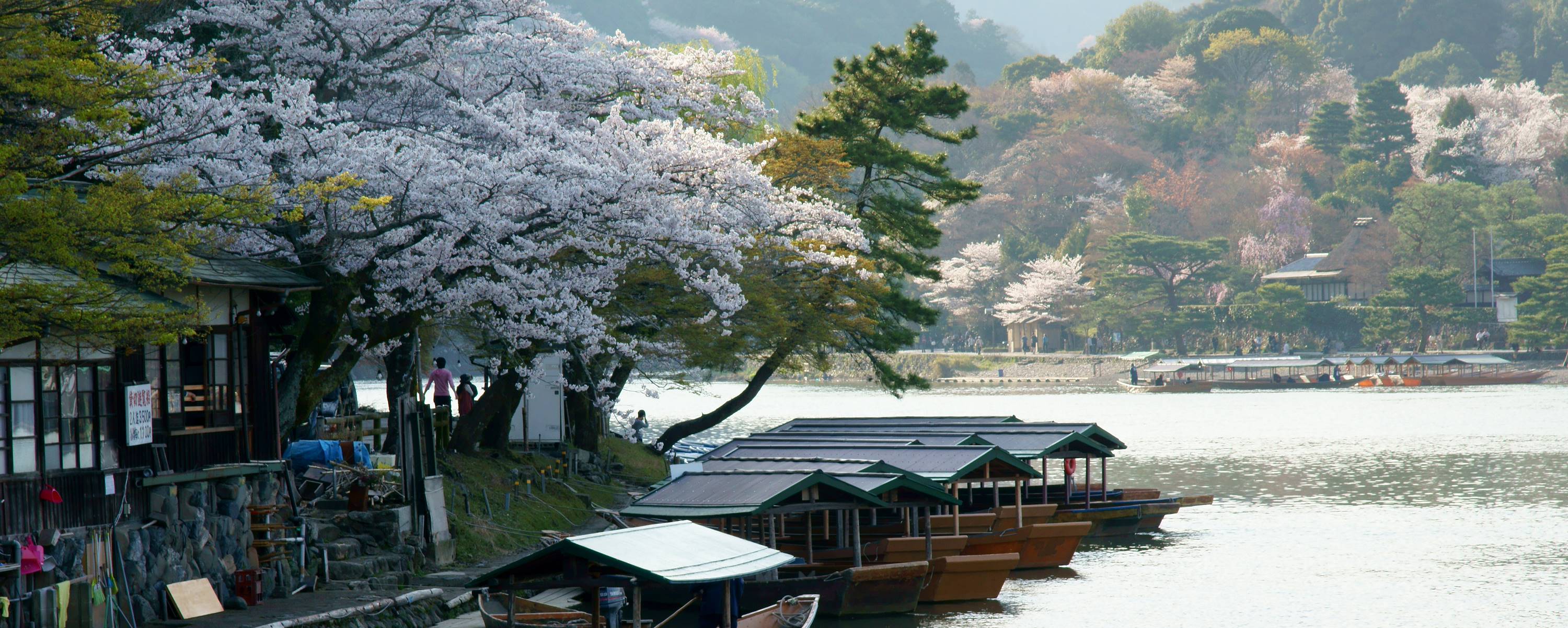
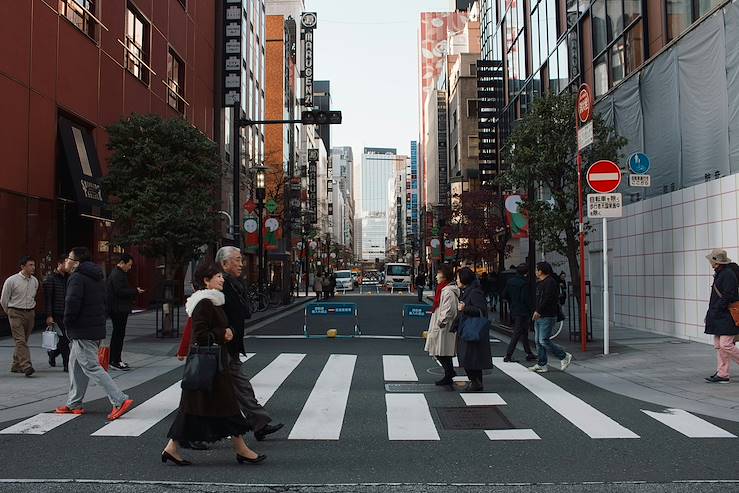
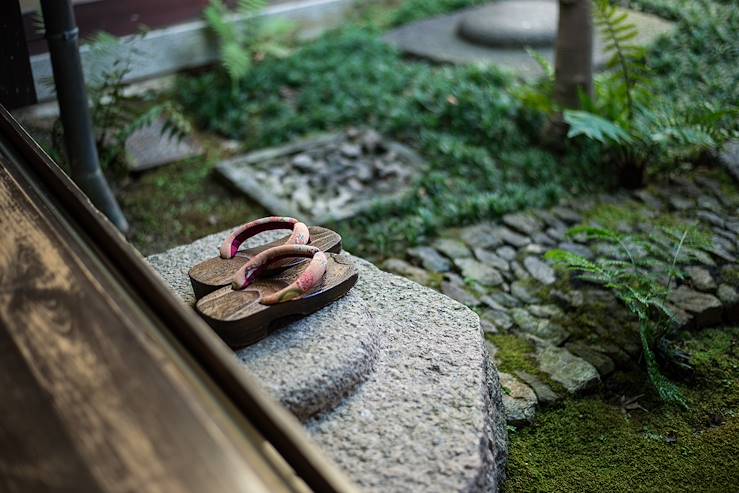
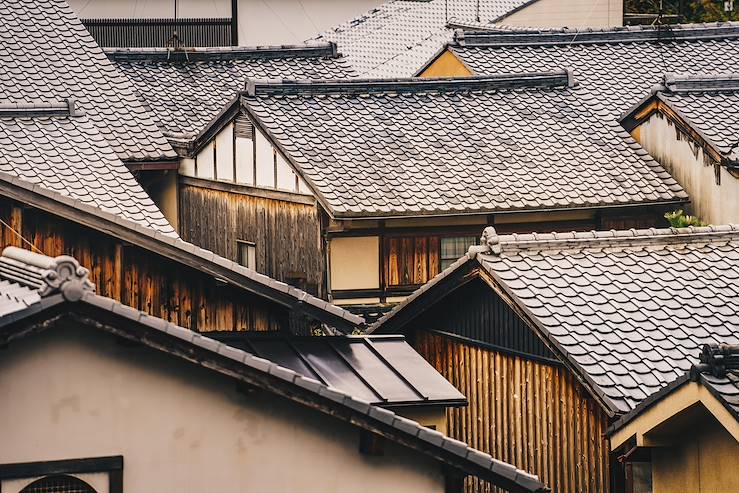
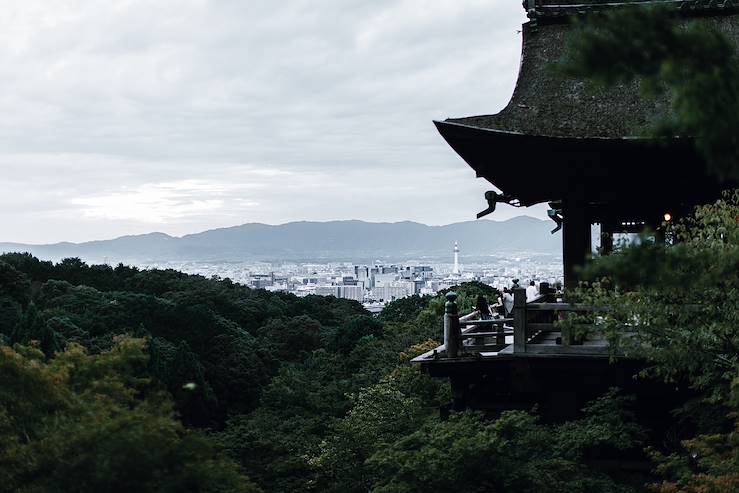
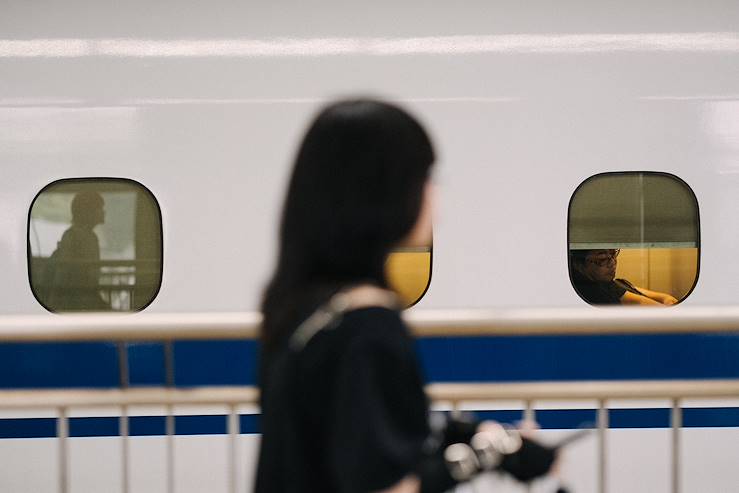
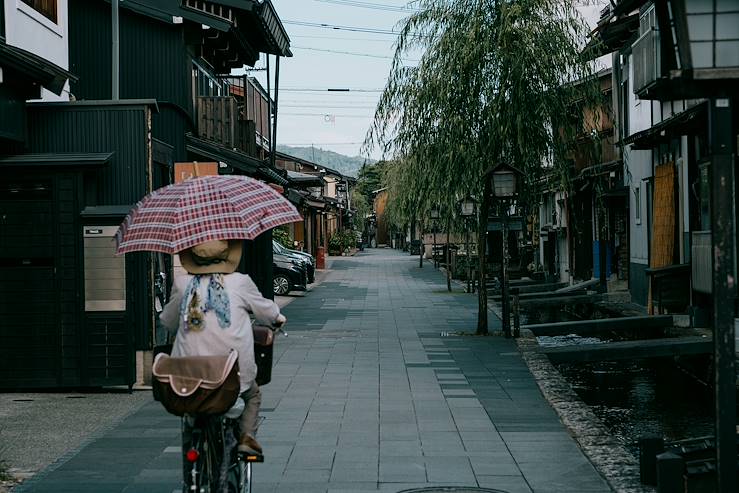
Inspiration for your own tailor-made trip
Japan - Tokyo - Kanazawa - Hida Furukawa - Kyoto
100% customisable for you
It’s the first day of your trip, and Japan awaits. After you’ve sailed through the airport and taken full advantage of the tipples in the airport lounge, hop on a 14-hour overnight flight to Japan’s vibrant capital, landing the following evening.
After you’ve landed and collected your suitcases, it’s time to hop on the Japan Rail train to the buzzing Shibuya district, a ward of Tokyo that is chock-full of trending shops, restaurants and bars. Once you reach Shibuya, check in for the next four nights at your contemporary hotel. Drop off your bags, have a quick refresh then stretch your legs with a wander around the neighbourhood.
Shibuya is the capital's fashion mecca, and you can see every look imaginable paraded around the district. Admire the neon signs illuminating the skyscrapers and maybe stop for a bite to eat in one of the many buzzing restaurants (your Concierge can recommend the best spots to try and even book you a table).
For the first full day of your trip, explore Tokyo on foot with a local guide (the best way to truly immerse yourself in a city). You’ll either be taken to Shimokita, a laid-back bohemian neighbourhood known for its vintage clothing stores and edgy cafes, or for a stroll through Shibuya (the city’s commercial centre). You’ll be on your feet a lot today, so make sure you wear comfortable shoes and pack your sunglasses. As you tour Tokyo, you’ll have the golden opportunity to discuss everyday life in Japan, and your knowledgeable guide can offer valuable advice for the rest of your trip.
Now that you’ve had an authentic taste of Tokyo, the next two days are yours for the taking. If you’re a foodie, why not rise bright and early to head to Tsukiji Fish Market? Watch skilled fishmongers carve gigantic tuna before grabbing a bite to eat at one of the market’s many eateries. If you prefer a lie-in, no worries. Roll out of bed mid-morning and make your way to a Neko Café, where you can lay back, relax and drink aromatic tea surrounded by dozens of cute cats and kittens.
If you’re a style guru, take a stroll through the city and admire the diverse fashion from the leather-clad punkettes in Shinjuku, to the pastel-hued lolitas in Harajuku and the effortlessly cool hipsters in Naka-Meguro. Feeling inspired to revamp your own style? Head to the Omotesando district for a spot of shopping. While you’re there, pop into a mall and find a purikura photobooth, where your candid snaps will be transformed into manga portraits.
Tokyo might be city teeming with modernity, but there’s still plenty for the history buffs. Just a short train ride away in Asakusa is the colourful Sensoji Temple, a Buddhist temple dating back to the year 645. We also recommend a trip to Meiju Jingu, a Shinto shrine dedicated to the soul of the 19th-century Emperor Meiju. Here, you’ll find stunning gardens dotted with bright blooms – perfect for a peaceful stroll.
If you’re not too tired after all that sightseeing, the evening is the perfect time to experience Shibuya’s electric energy. Sing your heart out at one of Shibuya’s many karaoke bars, or head to a basement rock club and dance the night away.
The bad news is that your time in Tokyo is over, but the good news is that you’re off to captivating Kanazawa – and it’s only a two-and-a-half-hour train ride away. This under-the-radar city is set on the Sea of Japan and boasts breathtaking gardens and temples, earning it the title of a UNESCO 'Creative City of Crafts and Folk Arts’. Kanazawa is steeped in history and offers a glimpse into the history of feudal Japan, from the samurai residences of the Nagamachi district to the geisha houses in Higashiyama.
Once you’ve checked into your hotel, head to a local chaya (traditional teahouse) for a historic tea ceremony. Dating back to the 12th century, it involves preparing earthy green tea powder in a small pavilion with modest utensils, with the aim of achieving peace of mind in a spiritual setting.
Once you feel suitably tranquil, take the afternoon to explore Kanazawa at your own pace. If you’re feeling peckish, tuck into some freshly caught seafood at one of the many restaurants in the Omicho food market, before strolling to Kenroku-en (‘Garden of the Six Beauties’) to admire the winding rivers and lush canopies – there are some 12,000 trees. If you want to continue your cultural tour, we recommend visiting the well-preserved samurai houses of Nagamachi to see where the ancient samurais lived and worked.
Today’s the day to depart for Hida Furukawa, but before you leave Kanazawa, it would be criminal to miss the 21st-century Museum of Contemporary Art. This futuristic building was designed by Japanese architects Kazuko Sejima and Ryue Nishizawa, and its exhibits include The Swimming Pool, by Argentinian artist Leandro Erlich – a popular interactive installation.
Once you’ve explored the museum, hop on a quick one-hour-and-15-minute bus to the quaint village of Shirakawa-go. This traditional town is famous for its gassho-zukuri (praying hands) style thatched-roof farmhouses, set against a backdrop of rice fields and mountains. Wander through the charming houses and admire the ingenuity of Japanese architecture – these wood and straw farmhouses are strong enough to withstand earthquakes.
After your speedy stopover in Shirikawa-go, hop onto another 50-minute bus to Takayama. Here, it’s just one final short train or bus to Hida Furukawa, where you’ll spend two nights in a traditional ryokan (Japanese inn). After a long day, spend your evening relaxing and admiring views of the Setogawa river and Shinshuji temple ready for another day of adventures tomorrow.
We’ve left today free for you to explore the charming city of Hida Furukawa independently. The tiny town is made up of narrow lanes and punctuated by rice fields and cattle farms (be sure to try the beef – it’s famously good). Spend the day wandering among the traditional ryokans and wooden houses and head down to the Setogawa River to wander along street-side canals and watch as amber-hued carp glide through the water.
If you’re a fitness fanatic, we can arrange a cycling tour in the picturesque countryside – a great way to admire the sights with the wind in your hair. And if your trip falls in April, you’re in luck. This is when the annual Furukawa Festival (which celebrates the Keta Wakamiya Shrine and the arrival of spring) takes place. Watch as hundreds of men carry a huge drum through the streets to the sound of thumping drumbeats, then spend the next night observing the more sedate parade of intricate floats around the city.
It’s time to head to your final destination. Hop on a train to Kyoto, via Nagoya, a journey that take approximately three hours. Once you make it to the city, check into your hotel for a five-night stay in Kyoto’s calm and cool Kamigyo ward. Here, natural beauty and traditional houses are the order of the day, so sit back and relax – you’ve got four more days to sink your teeth into the city.
Rise and shine – it’s your first full day in Kyoto. Today, we’ve arranged a walking tour of the city with a local expatriate to help acquaint you with your home for the next few days. Spend the day discovering Kyoto’s top spots and local haunts, and learning about life in the city. There’s no set route, meaning that your guide can tailor the walking tour perfectly to your specific interests and wishes – what better way to throw yourself into Kyoto’s rich history and culture?
With yesterday’s knowledge fresh in your mind, spend the next few days discovering Kyoto independently. With three whole days at your disposal, you’ll have three opportunities to rise early and walk the Philosopher’s Path. This serene one-mile walk takes you along a shimmering canal and, in the spring, underneath a canopy of pretty pink cherry blossoms. If you’re heading to Japan at a different time of year, you don’t need to miss out on the flowers – we can organise an ikebana session, where you’ll learn about the ancient art of Japanese flower-arranging.
If you have an eye for architecture, you’re in luck. Kyoto is jam-packed with historic temples and holy structures. Head to the Silver Pavilion at Ginkakuji temple to admire its wooden façade and lush trees or go to the Golden Pavilion at Kinkaku-ji to marvel at the shining gold leaf that encases the top two floors. If you’re in need of a little R&R, visit the rock garden of the Ryoan-ji Temple, where you can meditate within the monotone walls. If temples aren’t your thing, no problem – instead, stroll through the former residential districts of Gion and admire the simple and traditional machiya houses that line the streets – the oldest have been standing for over 100 years.
After all your sightseeing, you’ll have worked up quite the appetite. For lunch, head to Kawamichi-ya restaurant for their signature soba noodles, which have been on the menu for over 300 years, or Irayama Tofu Shop, a 200-year-old stall that serves fresh and delicious tofu that is handmade each morning (although the stall closes once it sells out, so be careful not to miss out). If you’re a tea lover, stock up on earthy matcha or sweet sencha tea at Ippodo Tea store on Teramachi Street. Then for a traditional dinner, head to Sumiyaki Akari for perfectly grilled yakitori or Mouriya Gion for sizzling teppanyaki, before stopping off for a sake nightcap in Bar K-ya.
Your time in Kyoto has come to an end. It’s time to head to the train station and catch a 30-minute train to Osaka, where you’ll be staying overnight to prepare for your flight home tomorrow. While you’re here, grab dinner and drinks in lively Shinsaibashi, a contemporary district set in the heart of Osaka. Then head to bed for some shut eye before your final travel day.
Sadly it’s time to say sayonara to Japan. With your suitcase crammed full of souvenirs, jump onto a 45-minute train to Kansai International Airport and relax in the airport lounge. Your flight will most likely go via China and you’ll touch down in the UK tomorrow, ready to bombard your friends with sake and snapshots of a spectacular trip.
Everything in this itinerary is entirely customisable, down to the smallest details. Here are some more suggestions of what could be included
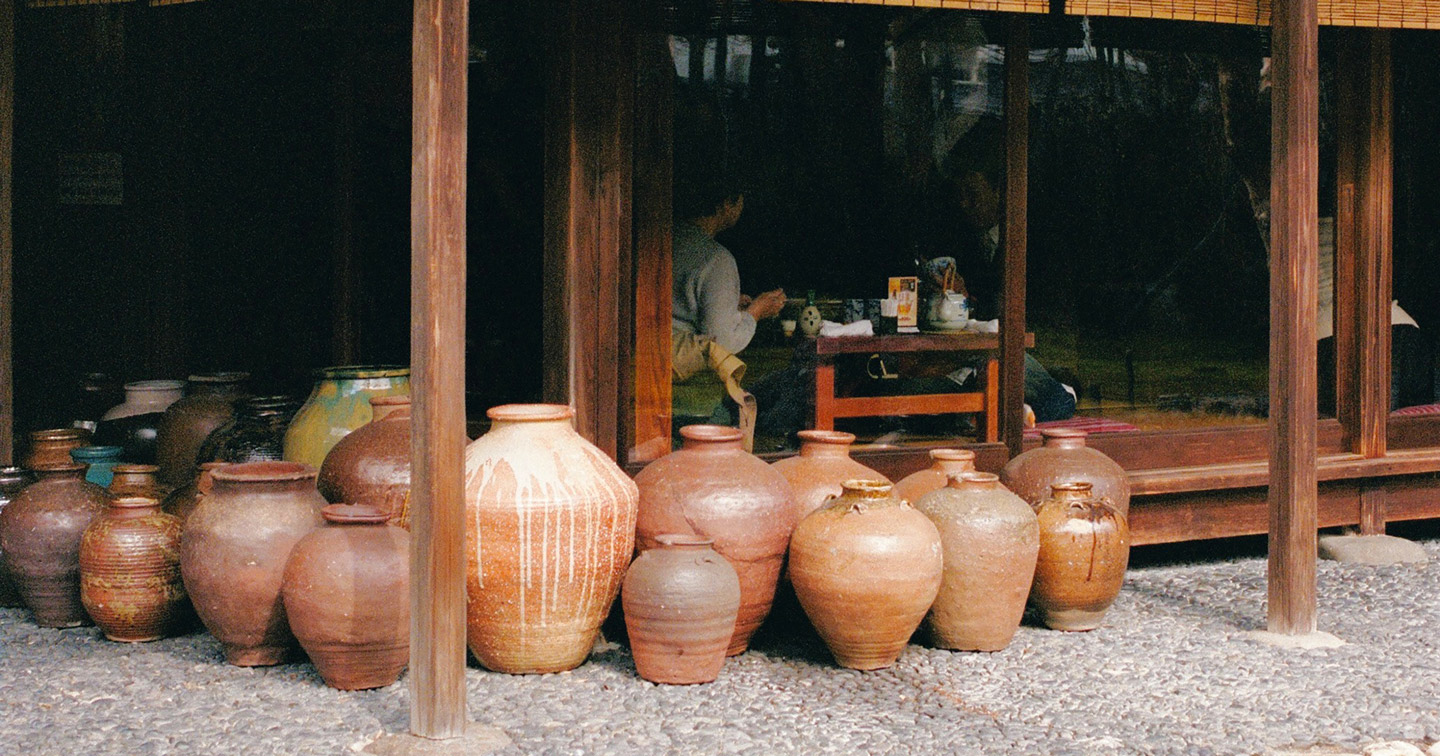
Each of our trips is entirely tailor-made with originality, quality and cultural immersion in mind. Our team of destination specialists will craft itineraries based on your tastes, using their first-hand knowledge and the help of our in-country team of Concierges and guides. All trips are accompanied by a wide range of additional services, including a 24-hour helpline, the Original Travel app, fast-track airport services and much more.
ENQUIRE NOW
Our team of destination experts will get to know you and your unique requirements for your holiday

We work with you to build an ultra-personalised holiday itinerary with your choice of accommodation, experiences and activities

All of our holidays include little extras designed to make a big difference to your trip, from fast-tracking you through airport check-in and security to our network of local Concierges